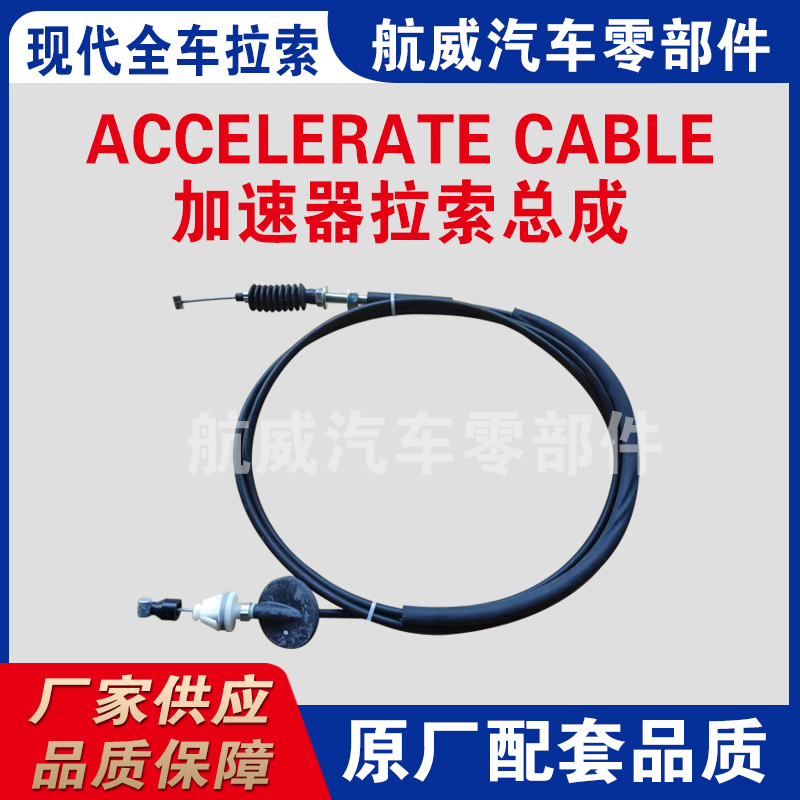efi throttle cable
Understanding EFI Throttle Cables Key Components of Modern Engine Systems
In the world of automotive engineering, the throttle cable plays a crucial role, especially in vehicles equipped with Electronic Fuel Injection (EFI) systems. The throttle cable is responsible for transmitting the driver's input from the accelerator pedal to the throttle body, which controls the flow of air into the engine. While traditional mechanical systems relied on a direct cable linkage, modern designs have evolved significantly, incorporating advanced technology to enhance performance, efficiency, and emissions control.
The Basics of Throttle Control
A throttle cable connects the accelerator pedal to the throttle plate in the intake manifold. When a driver presses the pedal, the cable pulls the throttle plate open, allowing more air into the engine, which corresponds to increased power output. In older vehicles, this was typically a mechanical system with a simple cable connection. However, as vehicles have evolved, so too has the technology behind throttle control.
Transition to Electronic Throttle Control (ETC)
In modern EFI systems, many manufacturers have transitioned to Electronic Throttle Control (ETC), also referred to as drive-by-wire. This system eliminates the traditional throttle cable in favor of electronic sensors and motors. With ETC, the accelerator pedal contains sensors that detect the position of the pedal. This information is sent to the Engine Control Unit (ECU), which then calculates the optimal throttle position based on various factors such as engine load, speed, and temperature.
Advantages of EFI and ETC Systems
efi throttle cable

The move from mechanical throttle cables to electronic systems has several advantages. Firstly, ETC provides greater precision in throttle control. The ECU can respond more rapidly to changes in driving conditions, improving acceleration and overall vehicle responsiveness. Additionally, the system can implement features such as cruise control and traction control more effectively because it can communicate directly with other vehicle systems.
Another significant advantage is the enhancement of fuel efficiency and emissions management. By controlling the throttle electronically, the ECU can optimize airflow and fuel mixture more precisely than a mechanical system. This capability reduces fuel consumption and lowers harmful emissions, aligning with stringent environmental regulations.
Considerations and Maintenance
While EFI systems and electronic throttle control present numerous benefits, they also require careful consideration regarding maintenance and troubleshooting. For instance, the absence of a physical throttle cable means that potential issues can arise from electronic components, such as sensors and wiring. Diagnosing problems often requires specialized tools and knowledge of the specific EFI system in question.
Regular inspections and maintenance routines are crucial to ensure these systems function correctly. Drivers should be aware of warning signs, such as poor acceleration, erratic engine behavior, or warning lights on the dashboard, which may indicate a malfunction within the throttle control system.
Conclusion
The EFI throttle cable has undergone a transformation from a simple mechanical device to a sophisticated electronic system that plays a vital role in modern vehicle performance. With the integration of electronic throttle control, manufacturers have achieved greater precision in engine management, improved fuel efficiency, and reduced emissions. As automotive technology continues to advance, understanding the importance of these components will be essential for both drivers and technicians alike. As we move forward, it's important to appreciate how these innovations have not only enhanced our driving experience but have also contributed to a more sustainable automotive future.
-
Workings of Clutch Pipe and Hose SystemsNewsJun.04,2025
-
The Inner Workings of Hand Brake Cable SystemsNewsJun.04,2025
-
The Secrets of Throttle and Accelerator CablesNewsJun.04,2025
-
The Hidden Lifeline of Your Transmission Gear Shift CablesNewsJun.04,2025
-
Demystifying Gear Cables and Shift LinkagesNewsJun.04,2025
-
Decoding Clutch Line Systems A Comprehensive GuideNewsJun.04,2025
